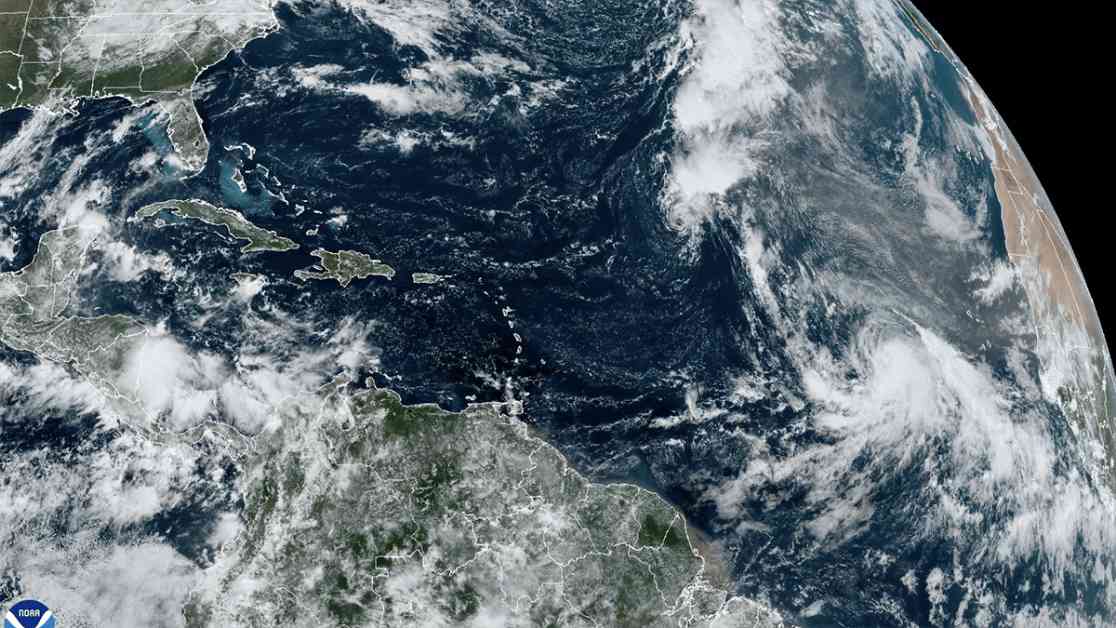Another tropical storm has been detected in the Atlantic Ocean, and meteorologists have predicted that it will intensify into a major hurricane in the coming days. This storm, named Tropical Storm Kirk, currently has maximum sustained winds of 60 mph as it moves westward over 800 miles away from the Cabo Verde Islands.
Despite its potential to become a major hurricane, there are currently no coastal watches or warnings in effect, and Kirk is expected to remain in the open waters of the Atlantic for the time being. The National Hurricane Center in Miami has provided these forecasts and updates to keep the public informed about the storm’s movements.
Kirk is projected to strengthen into a major hurricane as it continues to move northwest over the next week. However, experts do not anticipate any immediate threats to South Florida from this storm. At the same time, another storm called Joyce is struggling to maintain its status as a tropical depression while moving northward in the Atlantic.
In addition to Kirk and Joyce, Tropical Storm Isaac has transitioned into a post-tropical cyclone as it travels into the high latitudes of the North Atlantic. There is also another disturbance east of Kirk that has an 80% chance of forming into a tropical depression within the next week. This system is slowly moving westward over the eastern tropical Atlantic.
Furthermore, there is a region in the western Caribbean Sea that has a 40% chance of developing into a storm over the next week, possibly while it is located in the southern Gulf of Mexico. The Atlantic hurricane season is currently experiencing its 11th named storm with Kirk, and if it evolves into a major hurricane, it would be the third major hurricane of the season, following Beryl and Helene.
As meteorologists continue to monitor these storms and disturbances, it is essential for residents in potentially affected areas to stay informed and prepared for any possible developments. The safety and well-being of individuals in regions prone to hurricanes are of utmost importance, and timely updates from weather authorities can help mitigate risks and ensure proper precautions are taken.


